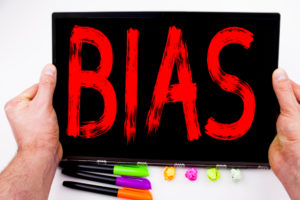
Super Bowl LII: A Study in Probabilities and Biases

(Evgenii Matrosov/Shutterstock)
Millions of people will tune in to Sunday’s Super Bowl LII, which pits the New England Patriots against the Philadelphia Eagles. While many will focus their attention on the food, commercials, and half-time show, the game also provides a good case study in leveraging probabilities and overcoming cognitive bias.
The betting line has the New England Patriots as a 4.5-point favorite going into the weekend, which will determine how millions of dollars wagered on the game will be dispersed. Over the past 27 years, sportsbooks in Las Vegas have earned an average return of about 7.6% on $83 million wagered, according to BoydsBets.
Only twice have the sportsbooks lost money on the game over that span, BoydsBets’ data show. Yes, it’s tough to beat the house. It can be done, but the odds of it are low. Few business plans so exquisitely exploit probability theory quite like gambling.
But how exactly do the oddsmakers that generate the odds for the sportsbooks put probability to use? How can they so consistently extract money from bettors? While oddsmakers don’t publicly share their methodologies, it’s well-known that they leverage the predictive power of advanced statistics, just like quantitative analysts in financial services, retail, and energy markets do.
The process begins, of course, with data. Oddsmakers gather loads of data on every factor that could conceivably impact the game. Every play from the season is broken down into constituent pieces, and players and teams and even coaching staffs are rated. Variables like the playing surface, the weather, performance at home versus away, and recent injuries are factored in.
Complex computers models are built, power rankings are generated, and the probabilities are crunched. Once the odds are published and the bets start rolling in, the sportsbooks will change the line based on how the bets are falling. (The point spread itself is actually the point at which the value of bets on both sides of the game is in balance, not what the oddsmakers think the final score will be.)
Sometimes the hedge funds like to get into the action. One quant shop, Wells Fargo Asset Management’s Analytic Investors LLC, outfit uses another technique that’s rooted in a single metric dubbed “NFL Alpha.”
NFL Alpha, according to this story in Bloomberg, is a calculation of how each club has performed when facing long betting odds. The better a team does against steep odds (that is, winning when they’re predicted to lose), the higher its NFL Alpha.
But there’s a twist. Instead of predicting the outcome based just on the NFL Alpha ranking, the quants at Wells Fargo Asset Management’s Analytic Investors LLC assume there will eventually be a reversion to the mean. In other words, they’re betting that it’s unlikely that a high-flying team that keeps beating the Vegas odds will continue that run.
Therefore, the Philadelphia Eagles’ NFL Alpha of 31.8 – fourth best in the league– works against them, and so the quants are picking the Patriots, which had a respectable but not awesome NFL Alpha of 12.4, to win the Super Bowl. Wells Fargo Asset Management’s Analytic Investors LLC has beaten the point spread in 10 of the last 14 Super Bowls.
Interestingly, the group picked the Atlanta Falcons to win last year’s Super Bowl LI using this same approach. The Falcons, of course, blew a sizable lead to lose to the Patriots in overtime. But late in the second half, ESPN had calculated that the Falcons’ odds of winning were a solid 99.8%.
“The Falcons just had to run the clock out,” Bloomberg quotes Chris Lardieri, one of the study’s authors, as saying. “You can’t account for human error and questionable decisions.”
That brings us to the topic of cognitive bias. Bill Schmarzo, the Bill Schmarzo, the chief technology officer of the Big Data Practice of EMC Global Services, looked deeper into the poor decision-making that doomed the Falcons a year ago.
There were two critical mistakes that cost the Falcons the game, Schmarzo writes in a blog post. First, quarterback Matt Ryan didn’t run the play clock below 10 seconds on every play. Second, they didn’t run the ball much in the second half despite averaging 5.8 yards per rush. These mistakes gave the Patriots the extra time they needed to get back into the game.
“All Atlanta needed to do was execute a simple ‘run the ball’ strategy and reduce the number of Patriots’ offensive possessions by one,” Schmarzo writes. “The Falcons ignored basic probabilities and the result was the biggest turnaround in Super Bowl history…at their expense.”
How did the Falcons make these errors when the data charted such a clear path to victory? Schmarzo explains that cognitive biases in the human brain make us all susceptible to so-called “decision traps.”
Schmarzo says the Falcons fell victim to several types of decision-traps last year, including over-confidence, anchoring bias, the framing effect, risk aversion, sunk costs, the endowment effect, confirmation bias.
Over-confidence: The Falcons incorrectly assumed their second-ranked passing offense could sustain the lead, despite the fact that their running backs were ranked fifth in the NFL, Schmarzo says.
Anchoring Bias: Schmarzo thinks the Falcons failed to adequately change their reference point from the successful first half, and as a result the Patriots continued to build momentum in the second half. Framing Effect: The Falcons incorrectly framed their position in the second half, and as a result, stayed with the passing game when probability theory strongly pointed to a running game as a best path to success.
Risk Aversion: The preference for certainty over uncertainty led the Falcons to continue passing the ball, despite the obvious advantages of running it.
Sunk Costs: When the momentum had shifted to the Patriots, the Falcons didn’t change strategies. Instead, they stuck with what they had invested in the first half (i.e. the passing game). Unfortunately, sunk costs cannot be recouped.
Endowment Effect: Schmarzo suggests the Falcons may have fallen prey to this bias, which says people ascribe higher value to things they possess. The Falcons possessed a top-rated quarterback in Ryan, but may have ignored other, more important factors.
Confirmation Bias: Nobody can know if the Falcons’ coaches fell victim to this bias, but the evidence strongly suggests that coaches were biased towards sticking with a passing game in the second half because it worked so well in the first half.
In the heat of the moment, it can be extremely difficult to slow down and think analytically. But Schmarzo says players and coaches would probably benefit if they brought a more quantitative approach to making decisions.
“Decision makers need to be trained to ‘take a breath’ and consult the models and numbers before rushing into a decision,” he says.
Related Items:
How Super Bowl 50 Will Feed Our Super Appetite…for Data
Are You Ready for Some Football Analytics?
































